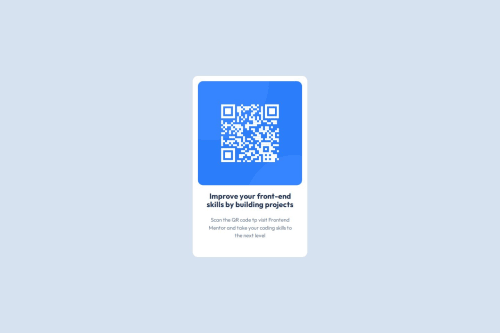QR code component solution

Solution retrospective
One good thing I used which I just recently learned is setting width and max width on my container/wrapper div, to keep it responsive, but also keep it from stretching at wider screens widths.
What challenges did you encounter, and how did you overcome them?I found this fairly simple as I have just finished a CSS course, so concepts were still pretty fresh in memory.
What specific areas of your project would you like help with?None on this, but can imagine help with be great for more complex projects.
Please log in to post a comment
Log in with GitHubCommunity feedback
- @V0zmo
This is a fantastic code simple and easy to read for a beginner like me! Much cleaner than mine lol, responsive for any device, and also great for me to learn! If I have some feedback. Maybe add some other features of this solution, like some animation or other interesting things that involve deep knowledge of the CSS course that you learn. Other than that great job and thank you! 🥳🥳🥳
Marked as helpful - @TedJenkler
Hi @Gingerlox,
Nice project! Here are a few suggestions for improvement:
ARIA Labels for Accessibility: Consider adding ARIA labels to enhance accessibility. This small step can make a big difference for users who rely on screen readers.
Clickable QR Codes: While not strictly necessary, I strongly recommend always linking images on QR codes so that older users or those who might struggle with scanning can simply click on the link. This improves the user experience, particularly for those less familiar with QR codes.
Extra Challenge - Custom QR Code: As an extra challenge, consider learning how to create your own custom QR code. It's a fun skill to have and something interesting to share with others!
Hope these suggestions help!
Best, Teodor
Marked as helpful
Join our Discord community
Join thousands of Frontend Mentor community members taking the challenges, sharing resources, helping each other, and chatting about all things front-end!
Join our Discord